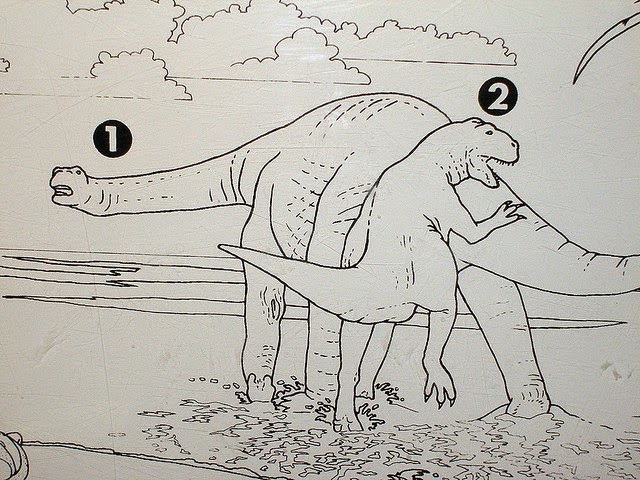Dinosaur George
Wednesday, 15 October 2014
Friday, 17 January 2014
The Clade Dinosauria
Dinosaurs are a
varied group of animals of the clade Dinosauria. They first emerged during the
Triassic period, 231.4 million years ago, and were the main terrestrial
vertebrates for 135 million years, from the commencement of the Jurassic (about
201 million years ago) till the end of the Cretaceous (66 million years ago),
when the Cretaceous–Paleogene annihilation event led to the annihilation of
most dinosaur groups at the close of the Mesozoic Era.
The fossil record points
that birds grew from theropod dinosaurs throughout the Jurassic Period and, as
a result, they are deemed to be a subgroup of dinosaurs by many archaeologists.
Some birds survived the extinction event that took place 66 million years before,
and their descendants maintain the dinosaur lineage to the current day.
Monday, 4 March 2013
Dinosaurs
Dinosaurs are a diverse group of animals of the clade
Dinosauria. They first appeared during the Triassic period, approximately 230
million years ago, and were the dominant terrestrial vertebrates for 135
million years, from the beginning of the Jurassic until the end of the
Cretaceous, when the Cretaceous–Paleogene extinction event led to the
extinction of most dinosaur groups at the close of the Mesozoic Era. The fossil
record indicates that birds evolved from theropod dinosaurs during the Jurassic
Period and, consequently, they are considered a subgroup of dinosaurs by most
paleontologists.
Some birds survived
the extinction event that occurred 66 million years ago, and their descendants
continue the dinosaur lineage to the present day. Dinosaurs are a varied group
of animals from taxonomic, morphological and ecological standpoints. Birds, at
over 9,000 living species, are the most diverse group of vertebrates besides
perciform fish. Using fossil evidence, paleontologists have identified over 500
distinct genera and more than 1,000 different species of non-avian dinosaurs.
Dinosaurs are represented on every continent by both extant species and fossil
remains. Some are herbivorous, others carnivorous. While dinosaurs were
ancestrally bipedal, many extinct groups included quadrupedal species, and some
were able to shift between these stances.
Elaborate display structures such as horns or crests are
common to all dinosaur groups, and some extinct groups developed skeletal
modifications such as bony armor and spines. Evidence suggests that egg laying
and nest building are additional traits shared by all dinosaurs. While modern
birds are generally small due to the constraints of flight, many prehistoric
dinosaurs were large-bodied the largest sauropod dinosaurs may have achieved
lengths of 58 meters and heights of 9.25 meters. Still, the idea that non-avian
dinosaurs were uniformly gigantic is a misconception based on preservation
bias, as large, sturdy bones are more likely to last until they are fossilized.
Friday, 13 July 2012
Jurassic Fight Club
Scientists study the battles of prehistoric creatures, such as dinosaurs, before they went extinct. Each episode features a forensic-styled breakdown of a prehistoric battle. Based on fossil evidence and paleontologist analysis, a CGI rendering of the battle, based on the evidence and the imagination of George Blasing (the show's host) is the final act of each episode. In most cases, the battles are based on actual fossil finds, although in several episodes scientists simply pit two contemporaneous prehistoric animals against each other in a hypothetical fight.
Wednesday, 2 November 2011
Monday, 19 September 2011
George Blasing
George Blasing, also known as "Dinosaur George", is a self-taught paleontologist. He was creative consultant and host of Jurassic Fight Club. Blasing also gives talks on dinosaurs to audiences across North America. He is a guest curator at the Witte Museum, San Antonio.
Subscribe to:
Posts (Atom)



